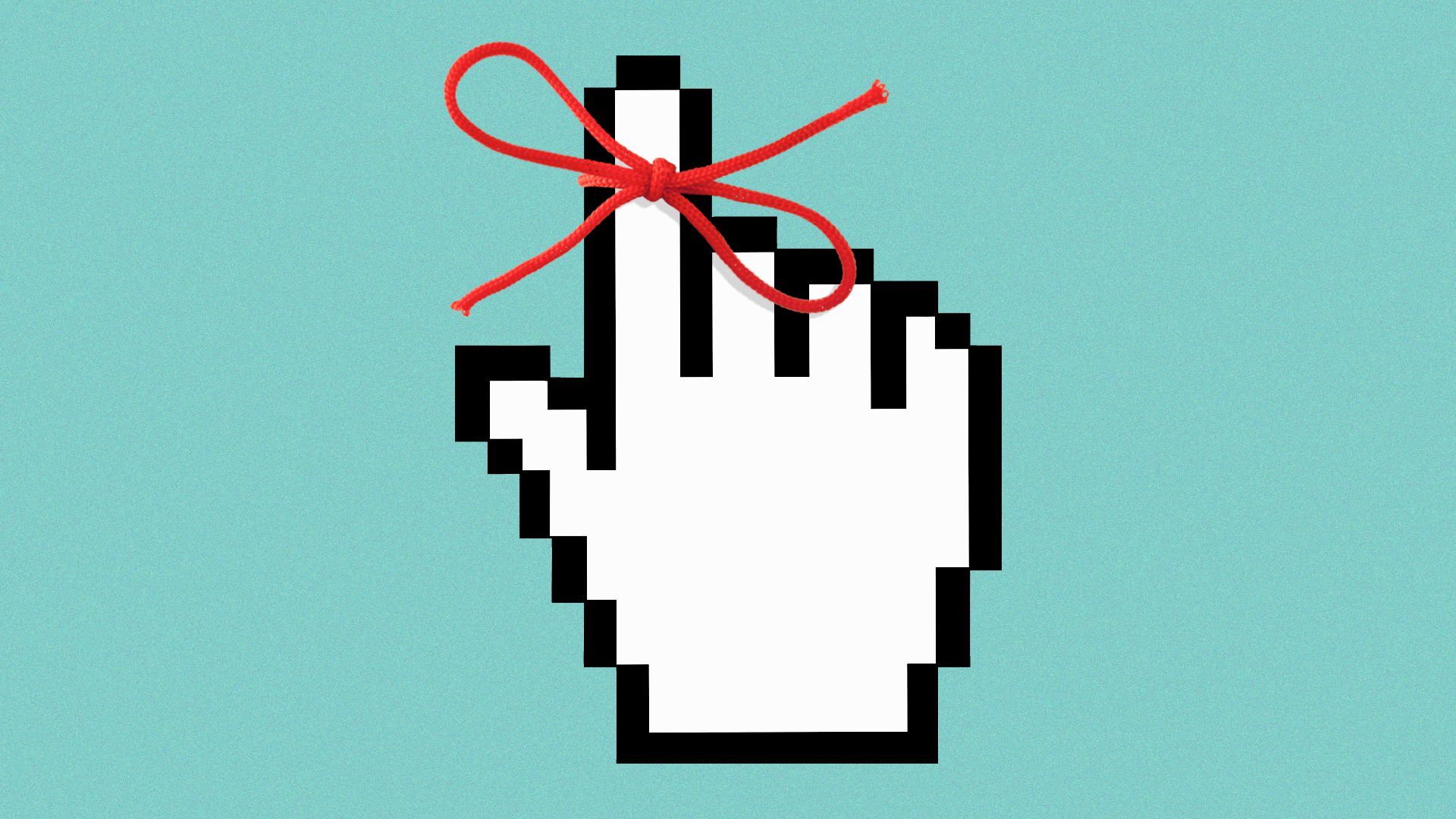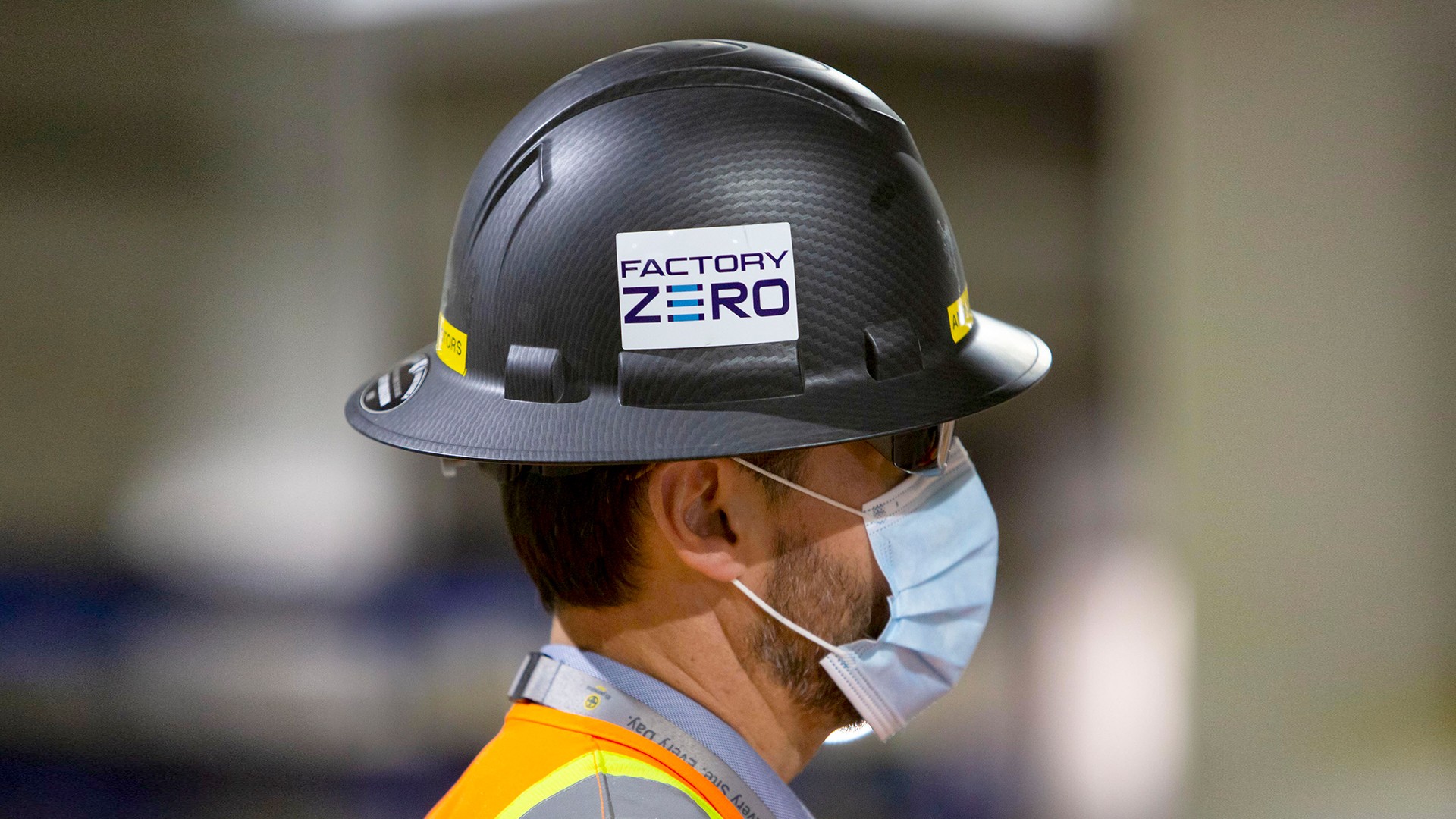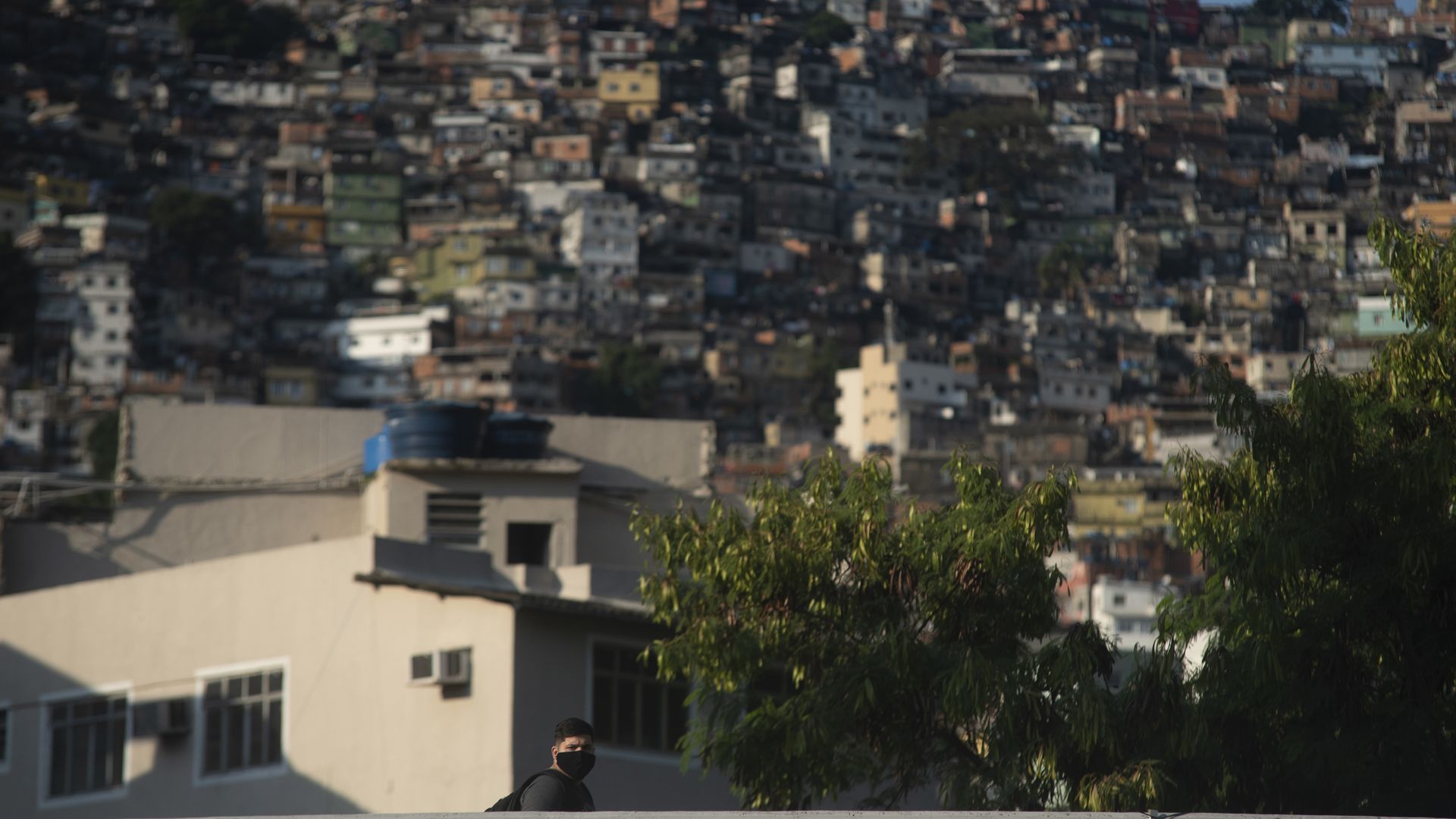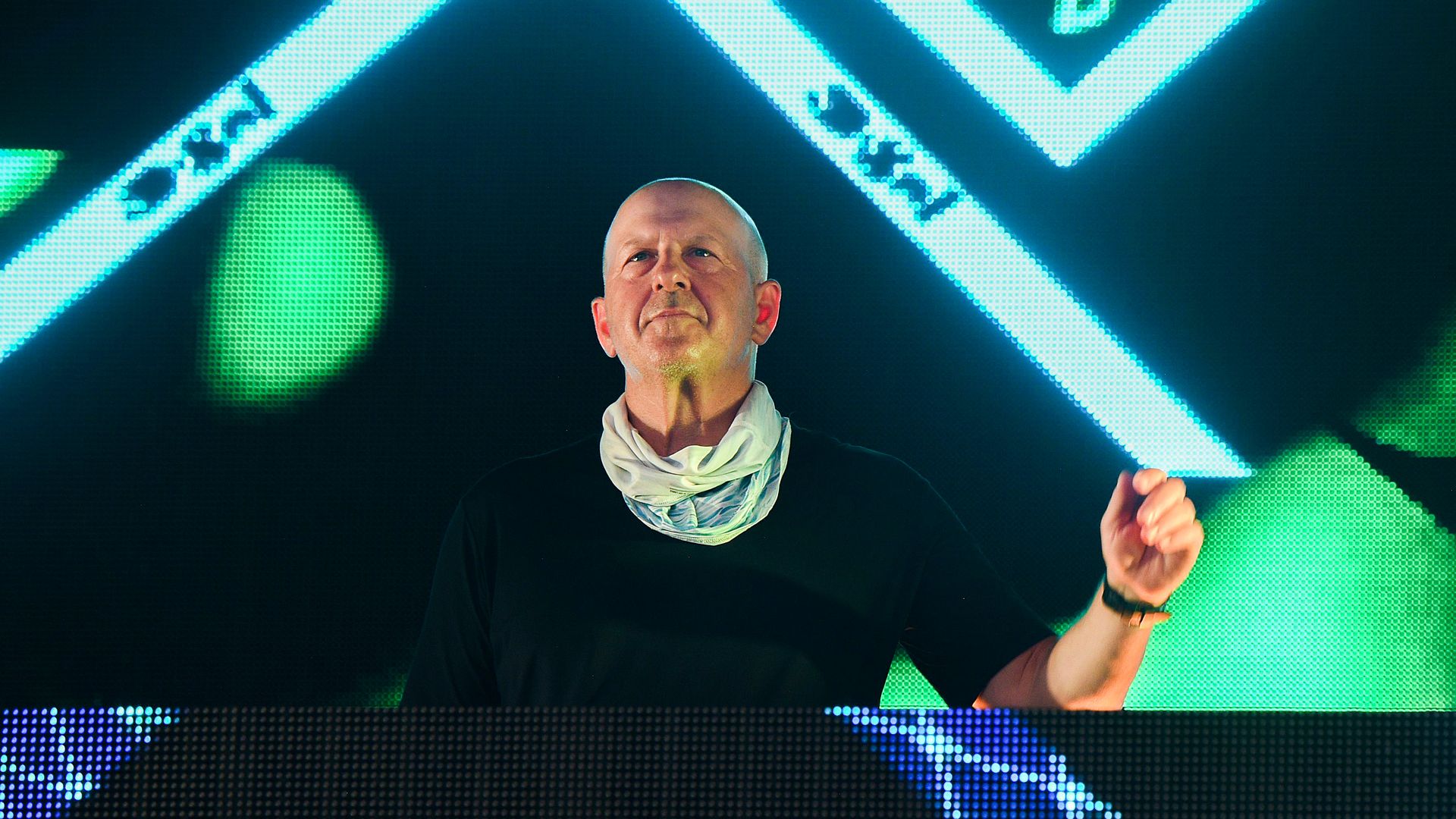| | | | | | | Presented By General Motors | | | | Axios What's Next | | By Bryan Walsh, Erica Pandey and Joann Muller ·Jun 15, 2021 | | Today we feature hard-to-fill green jobs, automated work advisers, and what to do when your car wants to drive more politely than you do. "What was next" trivia: On this day in 1785, two French balloonists became the first aviators in history to do what? 🎈 - Yesterday's answer was "Under God," with reader Walter Rosenbaum responding first.
- Send your answer, along with tips and feedback, to whatsnext@axios.com.
Today's Smart Brevity count: 1,366 words ... 5 minutes. | | | | | | 1 big thing: 3 dirty jobs that will build tomorrow |  | | | Illustration: Sarah Grillo/Axios | | | | The clean, green, connected world that's right around the corner will require dirty, dangerous work to build, Kim Hart writes. Think: Hauling solar panels up to high roofs. Digging trenches for fiber-optic cables along busy highways. Climbing towering masts to rig cellular antennas. The catch: There's high demand for these jobs, but it's harder than you might think to find people who want to do them. The big picture: The Biden administration is pushing big infrastructure investments that, if Congress approves, will allow localities to invest in green and high-tech projects, and in the process, create much-needed new jobs. Yes, but: The necessary work is almost always labor intensive, sometimes dangerous, and often requires migrating to different parts of the country at different times of the year to follow the jobs. Tower climbersThe installers of wireless antennas for cellphone networks and broadcast TV transmitters often clamber up to 2,000 feet above the ground while navigating electrical hazards. - They face a risk of fatal injury while on the job that is 30 times higher than the average American worker's, David Michaels, now a George Washington University professor of environmental and occupational health, said in 2018.
- Last year, the FCC estimated that the coming U.S. 5G build-out will require 20,000 additional tower climbers.
- While the job can be unforgiving, workers can earn more than $70,000 a year without a four-year degree — nearly twice the average salary of workers with only a high school degree.
Solar equipment installersThe solar industry will need to quadruple its workforce — to a total of 900,000 workers — to meet President Biden's 2035 clean energy target, according to the Solar Energy Industries Association. - Solar panels are heavy, weighing 40 to 50 pounds. Lugging them up ladders, especially to install on second- or third-story residential roofs, takes physical strength, skill and willpower.
- As with agricultural labor, solar workers usually must travel to where the jobs are. Cities and states with clean-energy-focused agendas and tax credits typically have stronger pipelines of residential and commercial installations, but winter months can be slower due to weather constraints.
Fiber-optic cable layersBiden's plan to get broadband to every U.S. home depends on quickly laying fiber-optic cables in unserved areas. - That means thousands and thousands of miles of trenches will need to be dug in rugged terrain, remote areas and along local right-of-ways near busy roads.
- These projects are time-consuming and, as with solar installations, the work is subject to seasonal demand and heavy travel.
- They can also be dangerous. Last year, two workers were killed in an explosion when their jackhammer struck an underground electrical line while installing a fiber-optic cable under an intersection, according to OSHA records.
|     | | | | | | 2. Nudging our way to better remote work |  | | | Illustration: Shoshana Gordon/Axios | | | | The HR startup Humu is using "nudges" from behavioral science to help companies better manage the more permanent transition to remote or hybrid work, writes Bryan Walsh. Why it matters: Adopting remote or hybrid work after the emergency of the pandemic will require unlearning the psychological habits of the office and harnessing tools that guide us to making the human connections that used to be automatic. How it works: Humu "sends personalized, customized nudges to different members of a team at different times and in different combinations that actually change behavior," says Laszlo Bock, the company's co-founder and CEO, and the former head of people operations at Google. Background: The company crafts its approach from the work of behavioral economists like Richard Thaler, who pioneered the use of small nudges — such as putting healthy food front and center in a cafeteria while hiding the salty snacks — to direct behavior. - "If you're working on inclusion, you need to create an atmosphere of psychological safety," says Bock. "So an employee might get a nudge that says, 'You've got a meeting this afternoon — try speaking up in the first 10 minutes.'"
Read the rest. |     | | | | | | 3. Your hands-free car is way more polite than you |  | | | 2021 Cadillac Escalade with Super Cruise technology allows hands-free highway driving. Photo: GM | | | | Assisted-driving features are supposed to make cars safer and relieve some of the monotony of driving, but watch out if your robot sidekick's driving style doesn't match your own, writes Joann Muller. The big picture: Reliable, fully driverless cars are still a long way off. Until then, motorists will share driving duties with partially automated, assisted-driving systems, and they need to know what to expect from them. I almost got into trouble on a Detroit freeway recently when the 2021 Cadillac Escalade I was driving turned out to be far more cautious than I expected. Background: The Caddy was equipped with enhanced Super Cruise, GM's hands-free highway driving system, which is rated safest by Consumer Reports. What happened: I steered the Escalade to the center lane of I-94, switched on Super Cruise and relaxed, placing my hands in my lap. - A few minutes later, the Escalade unexpectedly slowed from 66 mph to 49 mph.
- Uncertain about what was happening, and with cars swerving to pass me on the left, I grabbed the wheel and accelerated, automatically disengaging Super Cruise.
What I knew: A driver in the right lane had been attempting to pass me on the right but was prevented from doing so by a slower-moving vehicle in its own lane. - I — like most drivers would, in my opinion — dismissed the out-of-luck aggressive driver. But the Cadillac wanted to give him a wide berth.
What they're saying: GM engineers weren't in the car at the time, of course, but they told me later that the Escalade likely sensed the other vehicle was too close to my lane, and slowed as a precaution. The Escalade behaved as designed. Yes, but: It was disconcerting because I didn't expect the car to be so polite. That's not how I drive — and the sudden slowdown actually seemed a little dangerous to me, given the surrounding traffic. The bottom line: Driving is often a series of split-second decisions. If the driver and their robot assistant aren't in tune, it could lead to a lack of trust — or in the worst case, even accidents. - People have different personalities behind the wheel. Maybe self-driving cars might, too, someday.
Share this story. |     | | | | | | A message from General Motors | | Driving the future of America | | |  | | | | The all-electric future will be made by American labor.* From producing our revolutionary new Ultium Platform to the first EVs they'll power, we're investing billions not just in EVs and AVs, but in American manufacturing itself. Disclaimer:*Built from globally sourced parts. | | | | | | 4. Bloomberg's 50 finalist cities for Global Mayors Challenge |  | | | The Rochina favela in Rio de Janeiro. The Brazilian city became a finalist in the 2021 Global Mayors Challenge for a plan to improve housing conditions in favelas with a mapping technology. Photo: Fabio Teixeira/NurPhoto via Getty Images | | | | Bloomberg Philanthropies on Tuesday announced the 50 champion cities that will advance to the final round of the 2021 Global Mayors Challenge, writes Bryan. By the numbers: Mayors from 631 cities in 99 countries submitted ideas for the most important public innovations needed by their localities. - That initial list was whittled down to 50 finalists in 29 countries, with each idea judged on vision, potential for impact, feasibility and transferability.
The big picture: Innovations focused on improving health and reducing unemployment were common around the world, thanks to the pandemic's impact. - U.S. cities zeroed in on racial justice and equity, while social inclusion was a major theme in Europe, and raw infrastructure topped concerns in fast-growing African cities.
What they're saying: "It is critically important that cities around the world control the pandemic to ensure the long-term sustainability of urban life," says David Miliband, president and CEO of the International Rescue Committee and a co-chair of the Mayors Challenge selection committee. - "But it is just as important that we don't simply return to business as usual once the pandemic passes," he adds.
What's next: Fifteen of the 50 finalist cities will be selected for the grand prize, receiving $1 million and technical assistance to implement their ideas. Share this story |     | | | | | | 5. 1 DJ thing: Goldman Sachs' return to the office anthem |  | | | Goldman Sachs CEO David Solomon performing during the "Safe & Sound" drive-in concert fundraiser last July in Water Mill, New York. Photo: Kevin Mazur/Getty Images for Safe & Sound | | | | Goldman Sachs CEO David Solomon — an amateur DJ, as well as the head of one of the richest investment banks in the world — released a new track Friday to mark the end of the company's work-from-home period, writes Bryan. About that song: I'm no EDM expert — I like my music sad and made with guitars — but I have to say the opening verse of "Learn to Love Me (feat. Ryan Tedder)" provides a strange commentary on returning to the office: It's just me, myself and I / And for the first time in a while I don't mind it, I don't mind it / I've been everywhere but home, I ain't lonely, just alone / And I don't mind it, kinda like it, mmhmm The bottom line: Given that a recent survey of first-year Goldman bankers found that they were working an average of 95 hours a week, maybe Solomon just wanted to remind his now office-bound employees they're about to be "everywhere but home." |     | | | | | | A message from General Motors | | Driving the future of America | | |  | | | | The all-electric future will be made by American labor.* From producing our revolutionary new Ultium Platform to the first EVs they'll power, we're investing billions not just in EVs and AVs, but in American manufacturing itself. Disclaimer:*Built from globally sourced parts. | | | | Thanks for reading! If this email was forwarded to you, subscribe here! |  | | The tool and templates you need for more engaging team updates. | | | | | | Axios thanks our partners for supporting our newsletters. If you're interested in advertising, learn more here.
Sponsorship has no influence on editorial content. Axios, 3100 Clarendon Blvd, Suite 1300, Arlington VA 22201 | | | You received this email because you signed up for newsletters from Axios.
Change your preferences or unsubscribe here. | | | Was this email forwarded to you?
Sign up now to get Axios in your inbox. | | | | Follow Axios on social media:    | | | | | |










No comments:
Post a Comment